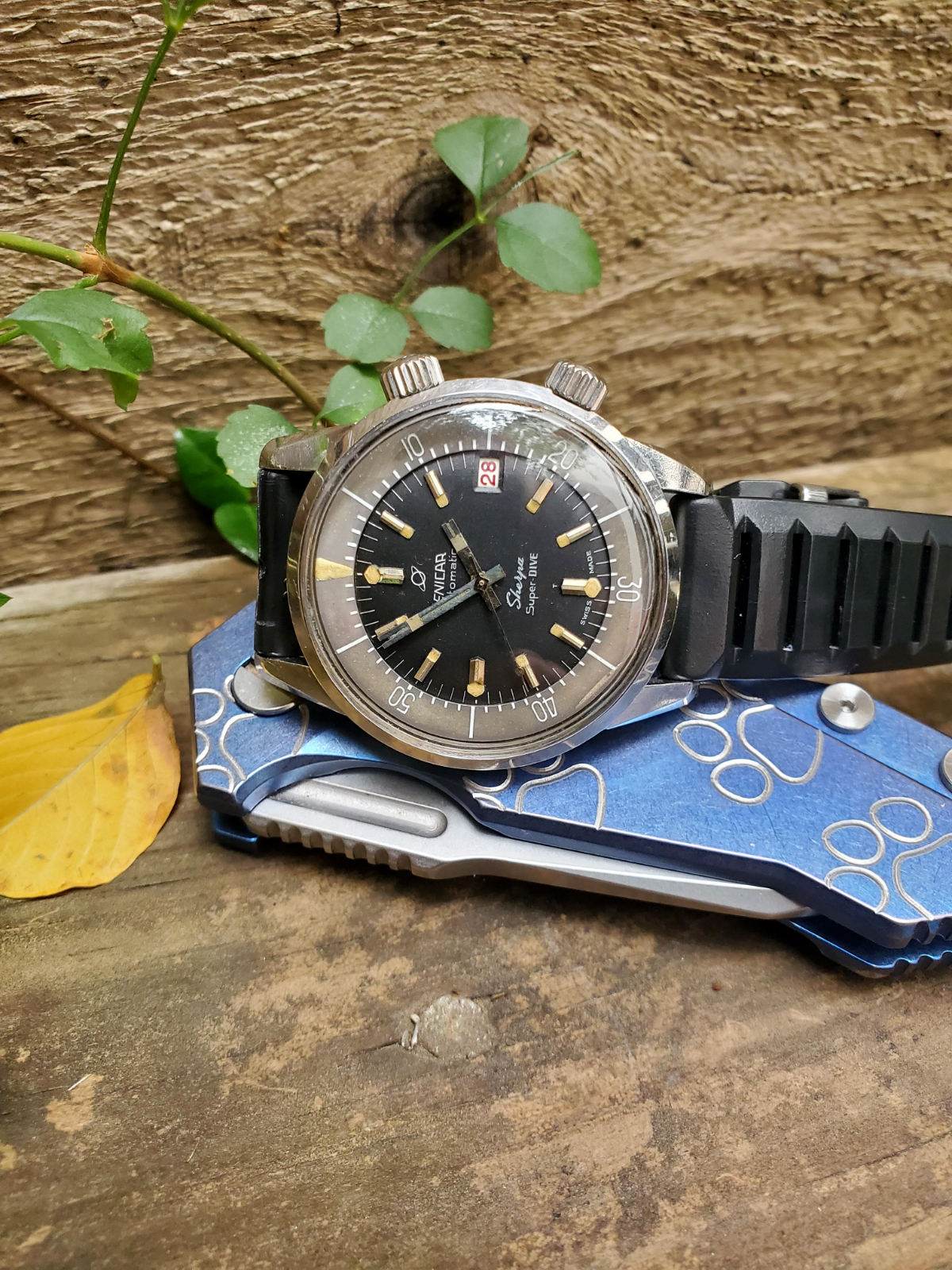In this review I’ll be talking about my Enicar Super Dive. This particular example was found by a friend in Poland and I had the privilege of buying it from him (Thanks P). The Enicar Super Dive has a military association and was used by the Polish Navy (Marynarka Wojenna Rzeczypospolitej Polskiej).
After reviewing Christopher Ward’s C65 I figured that a proper super compressor review was due from my favorite vintage brand. As you may or may not know I’m a huge Enicar fan, most of my vintage collection are Enicar’s. One thing I discovered about the small community of collectors is that most are very approachable and super helpful. I would like to thank Mat (@horology_biology), Steve (@enicar_forums), and Martjin (@vandervenus) for educating me with their wealth of knowledge and being so patient with all my questions.
Most vintage collectors know what an EPSA case is, but if you don’t then I’ll give you a quick explanation. The case back gets tighter against the O-ring the deeper it goes and the higher the water pressure hence the “compressor” name. Pretty nifty for a fifty some year-old technology.
Funny enough there has been recent discussion among collectors regarding the spring that should be in the case back. Apparently, some watches have it and some don’t. Enicar used a bayonet mount for the case back instead of a screw down like most compressors’ models did and some have the spring and others don’t. Is this right or wrong, that is still being debated among collectors. Within my collection some have it and some don’t. Were they lost with time or were they intended to not have one all along? We are still learning and the discussion is still
ongoing.

Usually with any vintage watch that has any military connection, that would equal a hefty price tag. Polish Navy Enicar’s are not quite there yet, but I wouldn’t be surprised if the prices keep climbing up as more people are introduced to the brand. They’re not cheap but can still be found under $5K USD. Those issued by the Polish Navy to their divers were engraved on the unmarked case back and side with a military ID that started with MW. My Super Dive was not military issued but it does have a clear case back and no spring. From what I’ve been told these unmarked cases were requested by customers through a dealer/distributor. Maybe a watchmaker had a spare case back at his shop and he swapped it or maybe it sat in inventory with the Polish Navy but was never issued and later sold to the public. The mystery around it is the charm with vintage watches.
The Super Dive Mark I is powered by the AR1145 movement. It has two crowns, the top one controls the inner bezel and the bottom is for setting the time/date. The inner bezel has thicker markers from one to twenty of which I’ll assume is for timing decompression during dives. The hands on it are referred to as tuning fork with a lume lollipop seconds hand that is no longer there. The lume from it has spread around the bezel through the years giving it a very unique look. The hour markers are now a mustard color that matches with the 12 o’clock hour marker on the bezel. Originally it would have been paired with a Tropic Sport strap but I choose the Tropic 2000. In my humble opinion it is the most comfortable strap I have ever worn. The way it contours around my wrist is just phenomenal.
Overall this is a great watch from a great vintage brand. You can tell this watch has lived a good life and was worn without regret. All the imperfections have made it distinctive and I’m proud to now own it and will one day pass it down to my son. If this watch could talk, I wonder what stories it could tell? Maybe it could tell me if it’s supposed to have a spring on its case back.



Leave a Reply
You must be logged in to post a comment.